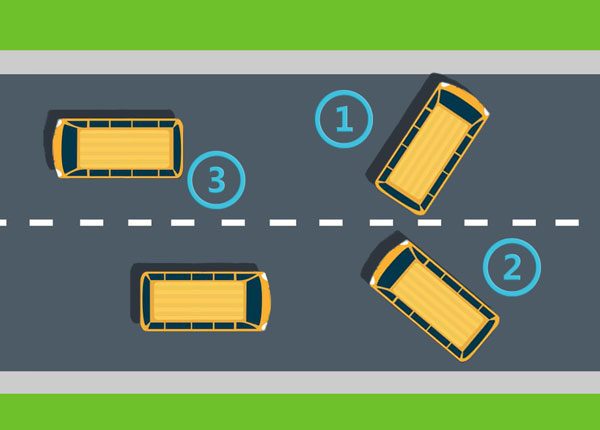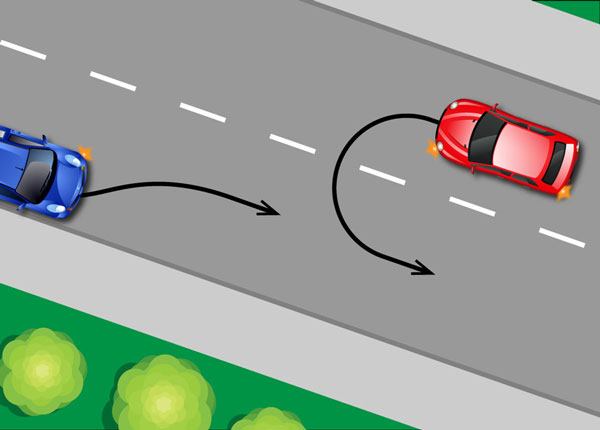
How to Make a Two-Point Turn Safely
Updated Oct. 30, 2020When the roadway is not wide enough to make a U-turn, drivers can use a two-point turn to change direction. This will usually only be possible on quiet suburban streets, when there is an available driveway on the left or right side of the road to facilitate the turn. Two-point turns using driveways on the left are more dangerous, as the driver must reverse the vehicle into a traffic lane.
You can expect to be assessed on two-point turns during the DMV driving exam. If possible, practice this maneuver in an empty parking lot using cones before doing so on a road. This will be every bit as beneficial to your development and you will not have to consider other drivers.
Two-point turn: driveway on the right
If you need to change direction, the street is relatively clear and there is a driveway available on the right, you may execute a two-point turn using these steps:
- 1

Use your indicator lights or hand signals to signal your intention to turn into the driveway, as you approach it.
- 2

Drive past the driveway and stop the vehicle once you have cleared it completely. Shift into “reverse”.
- 3

Check all the way around your vehicle for hazards, using your mirrors and turning to check your blind spots. Only proceed when you are certain it is safe.
- 4

Begin reversing onto the driveway. Leave your turn signal on and move slowly.
- 5

Come to a complete stop when your vehicle is centered in the driveway and the front wheels are completely clear of the road.
- 6

Now, activate your left turn indicator and shift into “drive”. Do not pull out of the driveway yet.
- 7

Drivers, cyclists and motorcyclists already on the roadway have the right-of-way. You must yield to these road users and any pedestrians wishing to cross the driveway from the sidewalk. Check thoroughly for traffic approaching from both directions.
- 8

Pull into the roadway to complete your two-point turn, as soon as it is safe to do so.
Two-point turn: driveway on the left
You should only use a driveway on the left to execute a two-point turn when there is no right-hand driveway available, as this maneuver is trickier and more dangerous. Pulling into the driveway will be easier as you are traveling forward. Unfortunately, this means you must then reverse onto a roadway that may be occupied by other traffic.
If you must complete a two-point turn on the left, follow the steps outlined here:
- 1

Signal your intention to turn as you approach the driveway, using indicator lights or hand signals.
- 2

Make sure you can safely pull onto the driveway, checking for motorists behind you and traffic coming from the opposite direction.
- 3

Turn left onto the driveway when the way is clear. Two-point turns on the left require you to enter the driveway facing forward.
- 4

Center your vehicle on the driveway and ensure your rear end is not sticking out into the street.
- 5

Make sure no traffic is approaching you and that no pedestrians are about to cross the driveway. Check all the way around your vehicle by turning to see blind spots and using your mirrors.
- 6

Reverse onto the road slowly and with caution.
- 7

Once you are completely clear of the driveway and realigned with the traffic lane, you may shift into “drive” and continue your journey.
Two-point turns on private property
In most cases, you will be making your two-point turn on private property. This means some extra consideration should be used when selecting an appropriate driveway. Do not just opt for the closest and most convenient turning point. Instead, select a driveway that is free from obstacles and other vehicles to minimize the likelihood of damaging another person’s property. Never try to squeeze onto a driveway already taken up with another vehicle.




